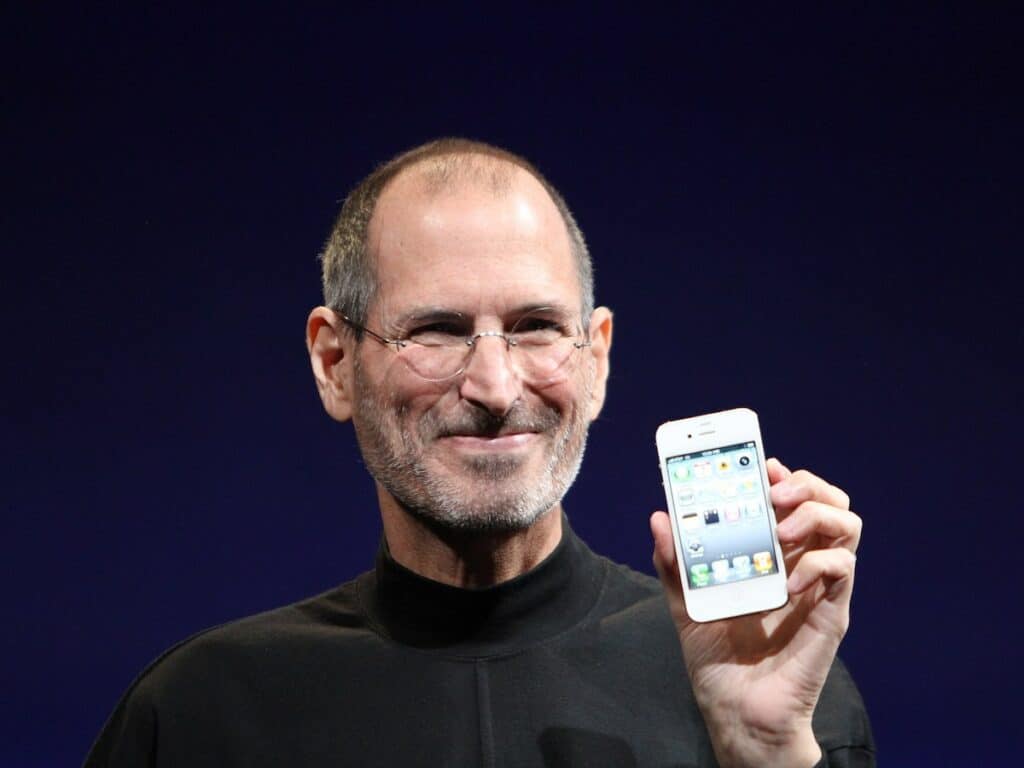Candidate Sourcing Advice inspired by Steve Jobs
Corporate sourcing teams could take some candidate sourcing advice from Steve Jobs. The Apple founder understood better than most that “less is more”. While other tech companies opted for far too many features and whirly-gigs, Jobs opted for elegant simplicity. He gave us a satisfying revolving button on the Apple iPod. He innovated the minimalist home button on the iPad and iPhone. In doing so, he forever changed our world.
Less-is-More Candidate Sourcing Advice
The Internet is serving up an almost infinite number of job applicants and potential candidates. The overwhelming amount of executive candidate information seems to offer a tremendous opportunity for executive search research and candidate sourcing teams. But it is an illusion. Recruiters often get lost in the growing number of candidates.
Times Square Analogy
Imagine standing in New York City’s Times Square on New Year’s Eve, moments before the ball drop at midnight. You are surrounded by a crowd of up to a million people. You know your ideal candidate is also in Times Square — only you can’t see him or her for the crowd. You start scanning an endless stream of people walking by. No, not that one. Not that one. Not him. Not her. You attempt to move to get a better vantage point to find “the one”, but your access is choked off.
Soon, you are unable to focus on anyone but the people immediately around you, those that, thanks to the growing crowd, are now invading your personal space, mere inches away. You cannot move and, for the most part, you cannot see. That perfect hire is standing right in front of you, in plain sight, only your view is completely obliterated.
So what is the difference between LinkedIn and Times Square? Times Square has one million people every New Year’s Eve. LinkedIn has more than 850 million members. On LinkedIn, far too many people get in the way of the candidate that you want to hire.
If Steve Jobs were still here, he would likely tell you to skip LinkedIn. Talk to people. Figure out who is the best. Go there.

Reasons for Candidate Sourcing Minimalism
Too Many Active Candidates
Because the Internet has made it possible for practically anyone to apply with a simple click of a mouse, they all do. Applicants who bear no resemblance to the job description apply en masse. Clients have told us that only about 1% of job applicants meet the basic qualifications. That means 99% of the applicants are a waste of time. Keyword filters and artificial intelligence can help lessen the burden, but those filters risk eliminating the candidates you are seeking.
Too Many Passive Candidates
If that were not all, there is also an endless list of passive candidates. And, yes, it is thrilling to have all that talent within reach as you surf the ‘net. However, there simply isn’t enough of you to go around. Of course, that’s where Intellerati comes in. We’re here to help corporate executive search leaders and in-house sourcing teams wherever you need support. Our passive candidate sourcing regularly uncovers top talent that sourcing teams miss. (See How to Crush Candidate Sourcing.)
Candidate Sourcing Advice: Practice Minimalism
Of course, our candidate sourcing advice is aimed at helping you so you don’t need to call in reinforcements. So practice the Zen of Candidate Sourcing. Take a few pages from Steve Jobs’ playbook. The former Chief Product Officer of Apple Sir Jonathon Ive translated Steve Jobs’ minimalistic sensibility into Apple design. Focus involves making hard choices. Minimalism is not that simple to do.
“Simplicity isn’t just a visual style. It’s not just minimalism or the absence of clutter. It involves digging through the depth of the complexity. To be truly simple, you have to go really deep. For example, to have no screws on something, you can end up having a product that is so convoluted and so complex. The better way is to go deeper with the simplicity, to understand everything about it and how it’s manufactured. You have to deeply understand the essence of a product in order to be able to get rid of the parts that are not essential.”
— Sir Jonathon Ive, Former Chief Design Officer, Apple
(Quoted from the book Steve Jobs by Walter Isaacason)
Candidate Sourcing Advice: Less is Not Simple
Too many candidates cause searches to fail. Consequently, recruiting research needs to move from the quantitative to the qualitative. Focus narrowly on finding exceptional hires. While the talent pool is nearly infinite, only a finite number of executives and technologists outperform.
Of course, any executive recruiter worth his or her salt has experienced that sinking feeling when your favorite candidate falls out. Your immediate impulse is to scoop up as many candidates as possible — so your long list grows exponentially. You exhaust yourself recruiting more and more candidates. Only you come back with a whole lot of nothing.
It isn’t that you didn’t try. You did. It is that you didn’t focus all your efforts on “the one” who’d blow the others away. You didn’t stop to figure out who that person is. The next time you find yourself in a pickle, remember. Do less. Less is more.
In executive search research, narrow your focus to what is most important. Practice the kind of minimalism that Steve Jobs has inspired. (For more about Steve Jobs, check out the blog post What Adoption Did to Steve Jobs.)


